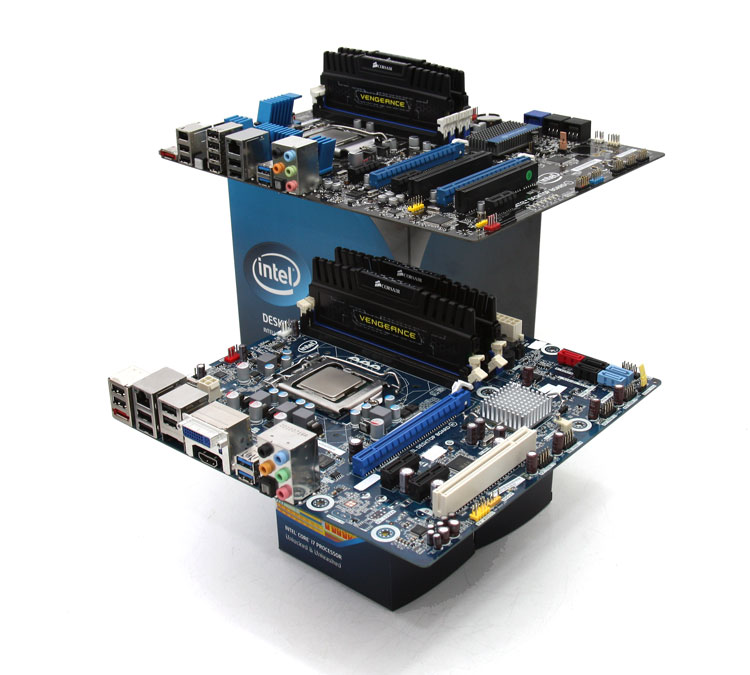Final Words & Conclusion
Conclusion
Surprisingly enough, the Core i7 2600K still can keep up reasonably well, not bad for something 2011! Obviously, it is getting annihilated by the two most popular more-core processors, faster infrastructures and such. The 2600K really still is a capable processor, Windows 10 ran fine (as long as you give it enough system memory), storage performance was fine and your everyday workloads, if not too complicated, works well as well on the four cores. When we zoom in a little, the IPC certainly is less than what is offered these days. But again, not bad. A Core i7 2600K overclocked could still offer plenty of boosts. Our H67 motherboard refused to tweak whatsoever BTW. We'll try and update this article with OC results as we're trying to get a P67/Z69 motherboard for further testing. So from your everyday usage, the system still is sufficient, and I am placing emphasis on sufficient as a new Ryzen or Core i5/7 PC certainly feels a notch faster overall.

Gaming
Gaming, however, was an interesting topic. Here the reality is simple the 2600K runs out of juice in CPU bound situations like low resolutions. The fact remains though, at 1080P is still has enough oomph to deliver decent enough numbers on anything below a GTX 1080, I mean not hugely great but certainly decent enough. When we take the GPU out of the equation and look solely at 720P performance, here you can see and measure a rather dramatic effect where Sandy Bridge limps behind. But let's always remember, a GPU bottleneck is far more apparent than a CPU bottleneck.
Power consumption
What is fairly interesting to see is that Sandy Bridge 2600K power consumptions were roughly equal towards today's platforms. Interestingly enough, we compared with a 6 and 8-core processor. So one thing is a fact, energy efficiency kicked in big time as a much faster Ryzen 7 1800X with 8-cores uses 'roughly' the same amount of power as an H67 / 2600K setup from 2011.
Memory
The difference in memory bandwidth coming from DDR3 towards DDR4 is tremendously big, shocking really with almost doubled numbers. While Memory bandwidth does not matter that much on an Intel platform it is the sum of all improvements that make the difference. DDR3 at the time was 1333 MHz, with kits running up-to 2000 MHz if the motherboard was a proper one. These days 3200 MHz is the norm and the latest platforms already can deal with memory speeds over 4200 MHz, crazy stuff really.
Final words
This funny little review derived out of the fact that many of you guys in the forums often debate CPU bottlenecks, and refer to the fact that you are still playing games on a dated PC, like the one shown today. Back in the days, the Core i7 2600K was a hot commodity, a ragingly and blazingly fast processor. Seven years later, I wanted to answer that simple question, is a Coffee Lake or AMD Ryzen 7 processor a worthy enough upgrade from Sandy Bridge? My answer is unequivocal yes, all small improvements add up, IPS, Memory bandwidth, faster PCIe slots, clock frequencies and so on make a modern age PC much faster opposed to what the Sandy Bridge 2600K has got to offer. I also have to state that the CPU still is a very capable one. In this year, 2018, you obviously also benefit from more cores for roughly the same amount of energy used, all these things combined add up. The CPU tests show that single-threaded workloads are adequate enough, but remain to be that. The Core i7 2600K will still get the job done and works fine for gaming, but it is at that threshold what you can deem to be acceptable. For many, however, PC gaming has become an expensive thing. GPU prices are high, NAND prices are high (but are stabilizing) and memory prices are high (but also stabilizing). In the end, an upgrade may be worth it. For gaming, however, your biggest bottleneck always remains to be a GPU. For CPU related workloads, well you've seen the numbers. One thing remains to be stated if you bought a Core i7 2600K back in the days, it probably has been the best investment for a PC you could have possibly made.
Handy related downloads:
- Sign up to receive a notice when we publish a new article
- Or go back to Guru3D's front page.

